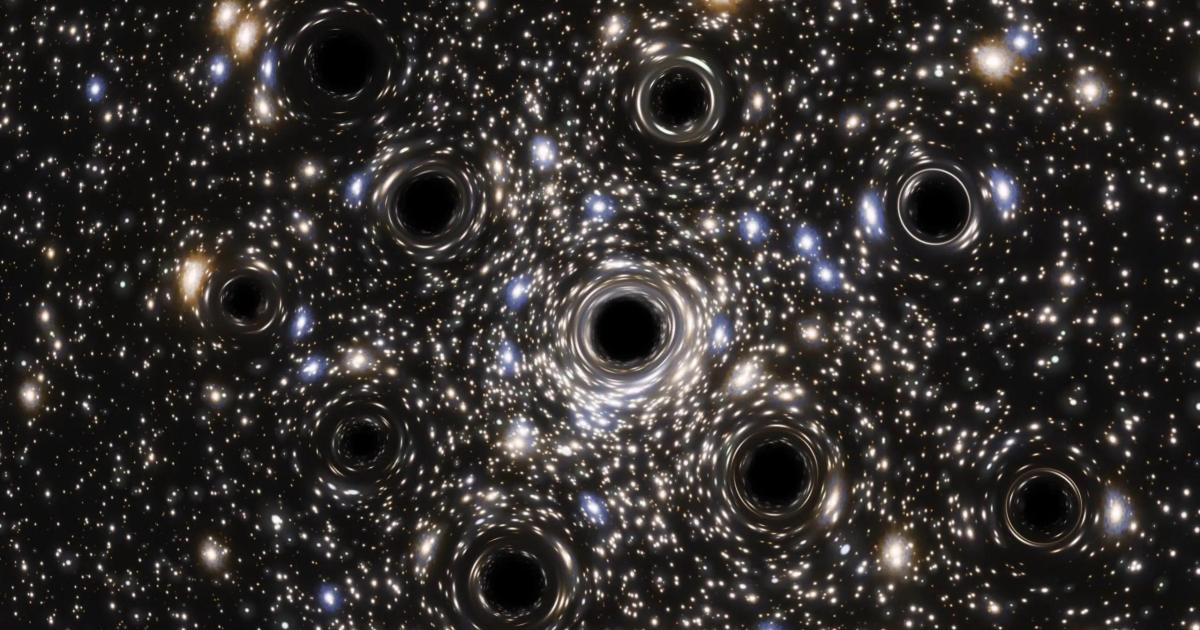Black holes are fascinating celestial objects that have captured the attention of many, thanks in part to movies like Interstellar. These enigmatic entities, which can bend spacetime to a significant degree, have piqued our curiosity about their numbers in the vast expanse of the Universe. While scientists continue to investigate the number of black holes and the distribution of their masses, their formation is typically associated with the end of the lives of high-mass stars.
One stunning example of a black hole’s impact is the Crescent Nebula, also known as NGC 6888, located in the Cygnus constellation. Formed by a fast stellar wind from a single Wolf-Rayet star, this emission nebula showcases the possibility of a star’s fate: supernova, white dwarf, or even a direct collapse black hole. Determining the exact outcome for stars that die in core-collapse supernova events is still a subject of ongoing research. These events are characterized by the fusion process, with silicon-burning being the final stage before a supernova explosion occurs. The most massive core-collapse supernovae tend to result in the formation of black holes, while less massive ones lead to the creation of neutron stars.
Furthermore, neutron star mergers can also contribute to the population of black holes. These mergers not only produce phenomena like gamma-ray burst jets but may also result in the formation of a black hole when the mass threshold is reached, trapping all the additional matter and energy without any escaping signals.
Occasionally, stars experience direct collapse, essentially disappearing without a supernova or any other explanation. This phenomenon, known as direct collapse, offers another pathway for the formation of black holes. In addition to supernovae and neutron star mergers, direct collapse events provide an opportunity for the creation of black holes.
Although we have made significant progress in understanding star formation throughout cosmic history, the precise “fraction” of black holes in the Universe has remained uncertain. Nevertheless, the field of gravitational wave astronomy has revolutionized our understanding of black holes. With observatories like LIGO and Virgo, we have made numerous detections of black holes, providing us with our first quasi-census of these cosmic entities.
These detections have allowed us to estimate the number density of black holes in the Universe. As we continue to improve our ability to detect black hole mergers, we can ensure that we are not overcounting them. Advanced LIGO’s range for black hole mergers surpasses its range for neutron star mergers due to the mass dependence of the signal amplitude. This suggests that although low-mass black holes are more abundant, our current gravitational wave observatories are more sensitive to higher-mass systems.
However, the lowest black hole masses, specifically those at or below 10 solar masses, present the greatest uncertainties. The population of black holes within this mass range is still relatively unknown, highlighting the challenges that remain in our understanding of black holes.
In light of all the available data, astrophysicists have been able to estimate the cosmic black hole mass function. This mass function provides insights into the mass distribution of black holes at different cosmic epochs. Integrating over cosmic time and the observable Universe, scientists estimate that there are approximately 40 quintillion black holes in our Universe.
To put that into perspective, it is believed that 1-2% of all stars eventually become black holes, which is a higher percentage than previously assumed. This suggests that the total black hole mass density in the Universe is approximately 10% of the total mass.
As our understanding of black holes continues to grow, these captivating entities will undoubtedly keep astronomers and scientists intrigued, pushing the boundaries of our knowledge about the mysteries of the cosmos.


